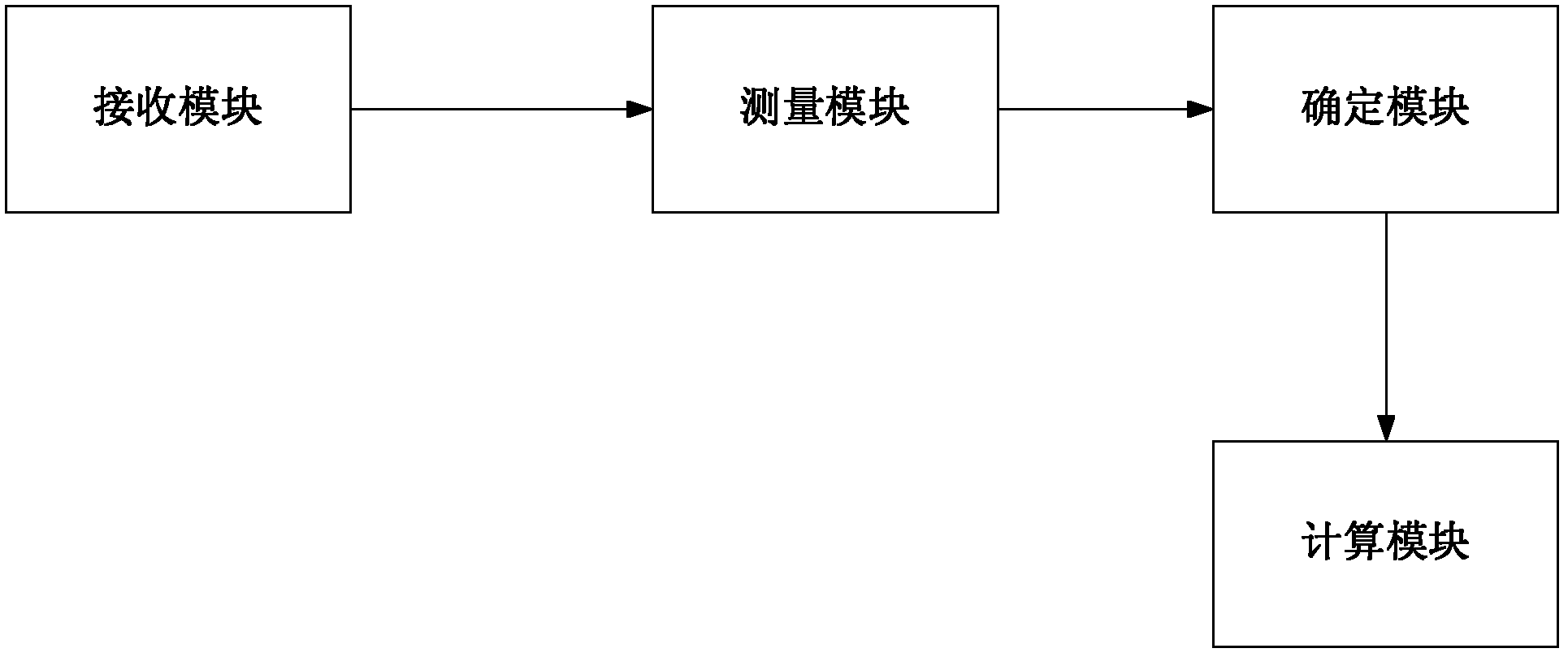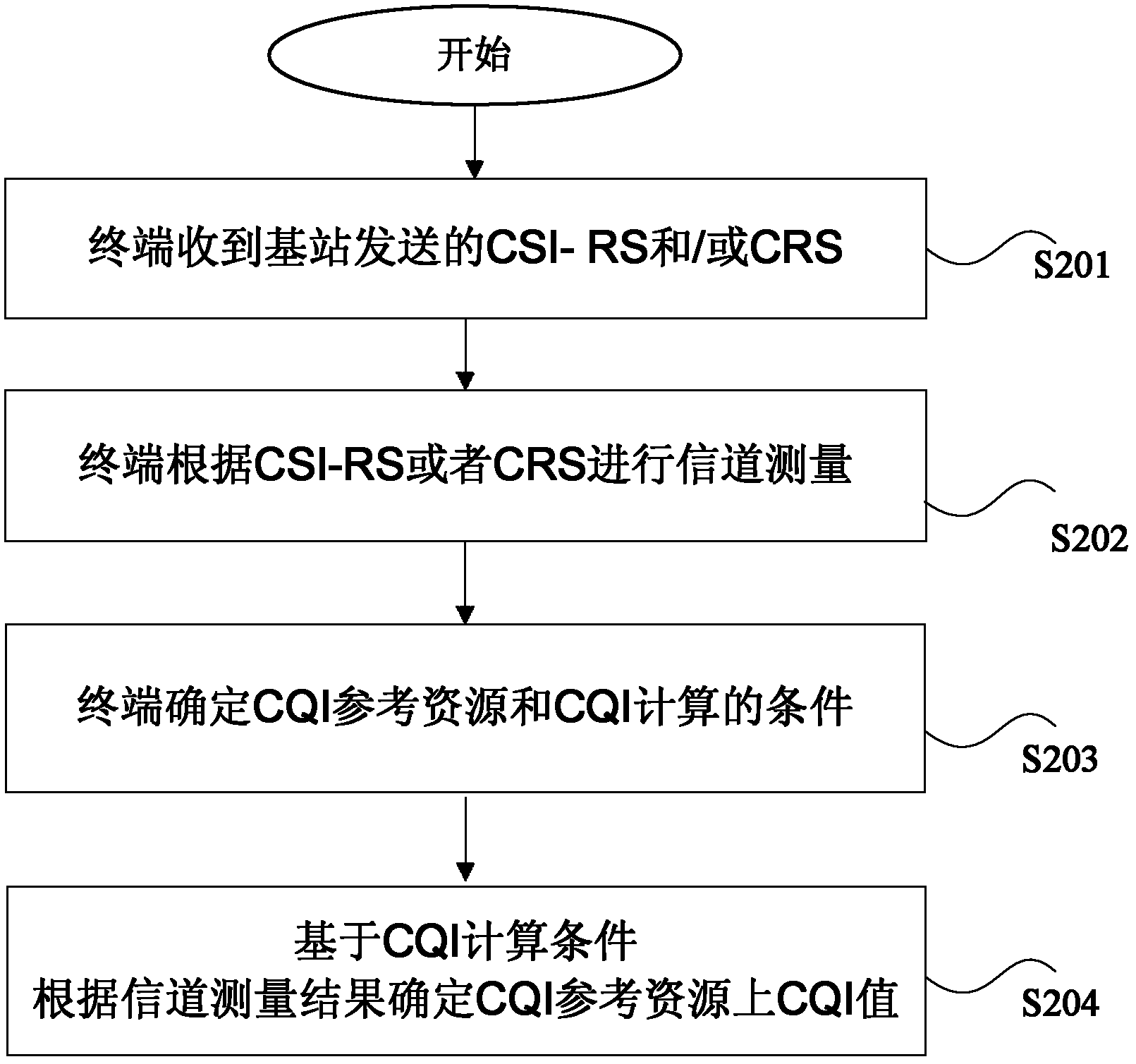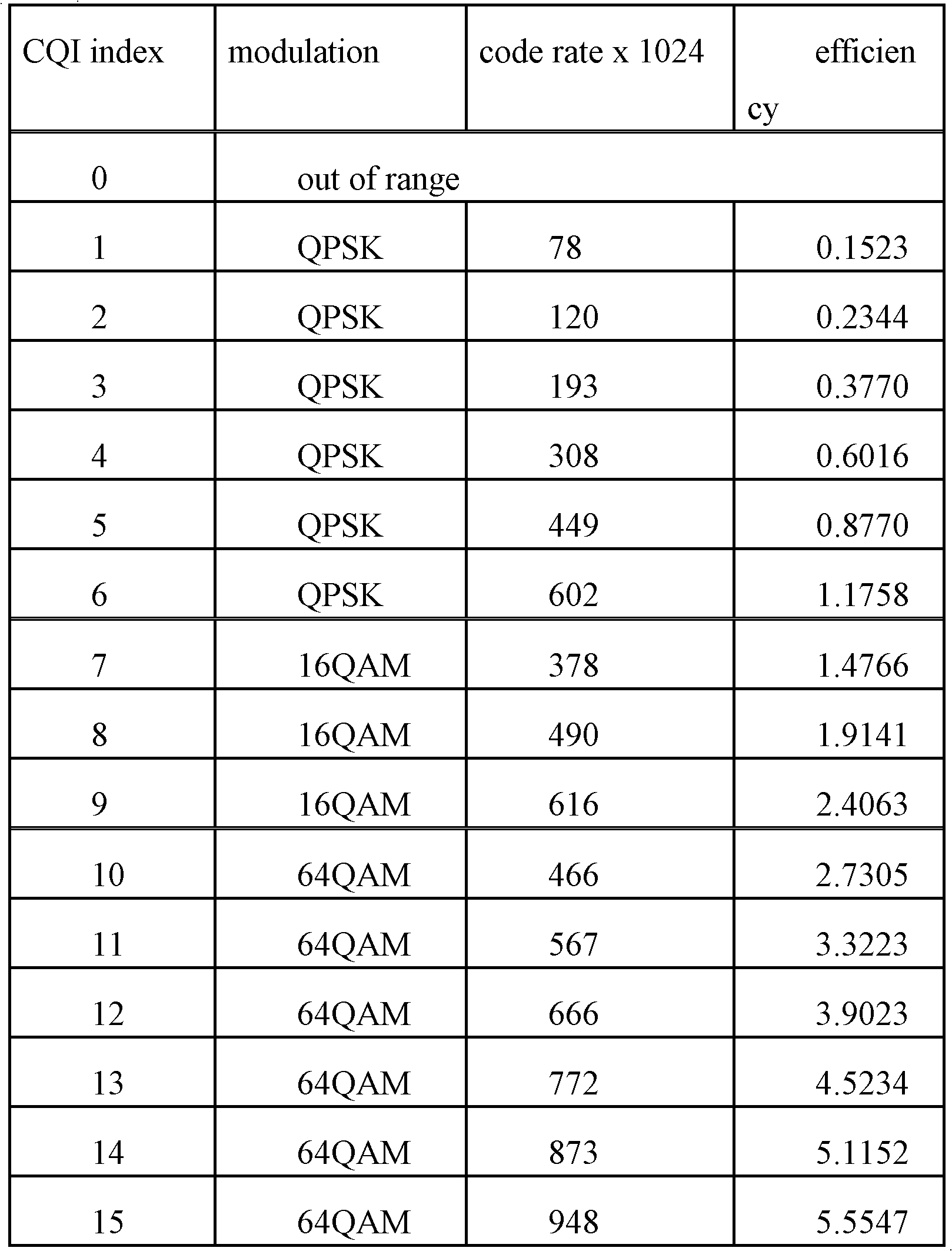A terminal and method for calculating channel quality indication information
A channel quality indication and channel measurement technology, which is applied in the direction of transmission modification based on link quality, channel estimation, and signaling as a feature, can solve problems such as inability to obtain accurate channel quality indication information, and achieve guaranteed performance and effects. Guaranteed calculation accuracy and improved performance
- Summary
- Abstract
- Description
- Claims
- Application Information
AI Technical Summary
Problems solved by technology
Method used
Image
Examples
Embodiment 1
[0152] The CQI calculation conditions determined in this embodiment include, corresponding to transmission mode 9, regardless of whether the current subframe is a multicast-single frequency network MB-SFN subframe or a non-multicast-single frequency network MB-SFN subframe, when the terminal calculates the CQI The CRS overhead of the current subframe is calculated according to the non-multicast-Single Frequency Network MB-SFN subframe.
[0153] At this point, there are two possibilities:
[0154] The first possibility is that the current subframe is a multicast-single frequency network MB-SFN subframe. At this time, when calculating the CQI, it needs to assume that the CRS overhead of the current subframe is calculated as a non-MB-SFN common subframe.
[0155] For transmission mode 9, the MBSFN subframe exists reasonably. If the UE finds that the subframe corresponding to the CSI reference resource is an MBSFN subframe, then at this time, the data area of the MBSFN subframe ...
Embodiment 2
[0160] In this embodiment, the determined CQI calculation conditions include, for transmission mode 9:
[0161] (1) When PMI / RI is not configured, if the number of antenna ports of PBCH is 1, the transmission mode is set to single antenna port transmission;
[0162] (2) When PMI / RI is not configured, if the number of antenna ports of PBCH is greater than 1, the transmission mode is set to transmit diversity;
[0163] (3) When PMI / RI is configured, the transmission mode is set to at most eight layers of transmission.
[0164] Wherein, the base station can configure the UE to have PMI / RI feedback or not to have PMI / RI feedback through the high layer parameter pmi-RI-Report.
[0165] Furthermore, when PMI / RI is configured, the transmission of up to eight layers includes up to eight layers of closed-loop spatial multiplexing transmission (when the number of CSI-RS ports is greater than 1) and open-loop single-layer transmission (when the CSI-RS when the number of ports is 1).
...
Embodiment 3
[0171] In this embodiment, the determined CQI calculation conditions include, for transmission mode 9:
[0172] (1) When PMI / RI is not configured, if the number of antenna ports of PBCH is 1, the transmission mode is set to single antenna port transmission;
[0173] (2) When PMI / RI is not configured, if the number of antenna ports of PBCH is greater than 1, the transmission mode is set to transmit diversity;
[0174] (3) When PMI / RI is configured, if the number of CSI-RS ports is 1, set the transmission mode to single-antenna port transmission; if the number of CSI-RS ports is greater than 1, set the transmission mode to at most eight-layer transmission.
[0175] Wherein, the base station can configure the UE to have PMI / RI feedback or not to have PMI / RI feedback through the high layer parameter pmi-RI-Report.
[0176] Specifically, if the UE is configured to have PMI / RI and the number of CSI-RS ports is greater than 1, the transmission mode is set to up to eight layers of cl...
PUM
 Login to View More
Login to View More Abstract
Description
Claims
Application Information
 Login to View More
Login to View More - R&D
- Intellectual Property
- Life Sciences
- Materials
- Tech Scout
- Unparalleled Data Quality
- Higher Quality Content
- 60% Fewer Hallucinations
Browse by: Latest US Patents, China's latest patents, Technical Efficacy Thesaurus, Application Domain, Technology Topic, Popular Technical Reports.
© 2025 PatSnap. All rights reserved.Legal|Privacy policy|Modern Slavery Act Transparency Statement|Sitemap|About US| Contact US: help@patsnap.com



